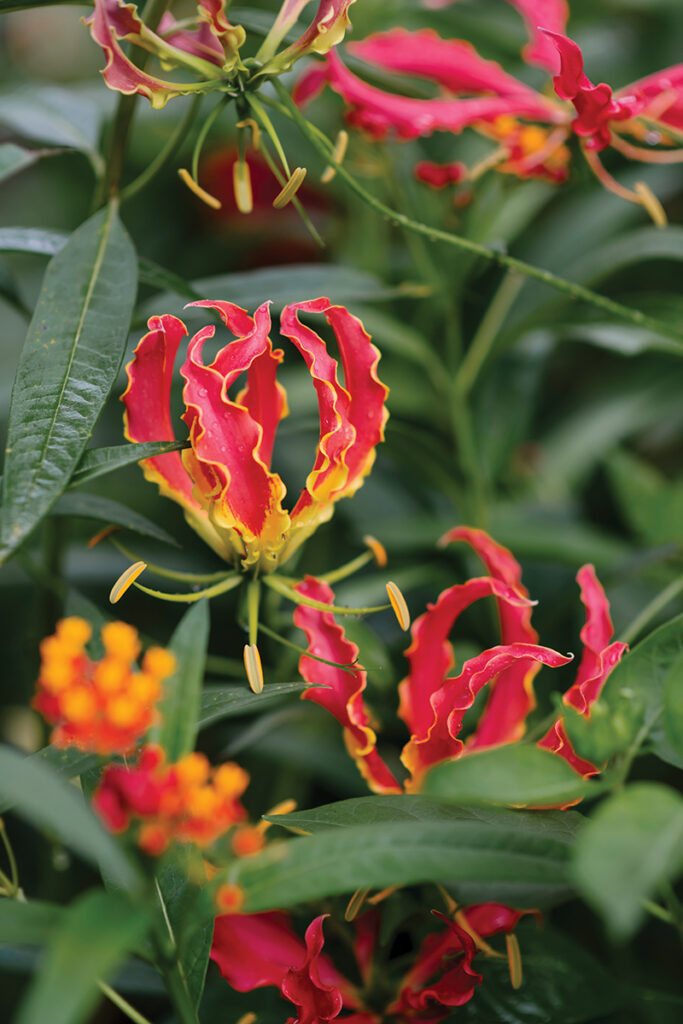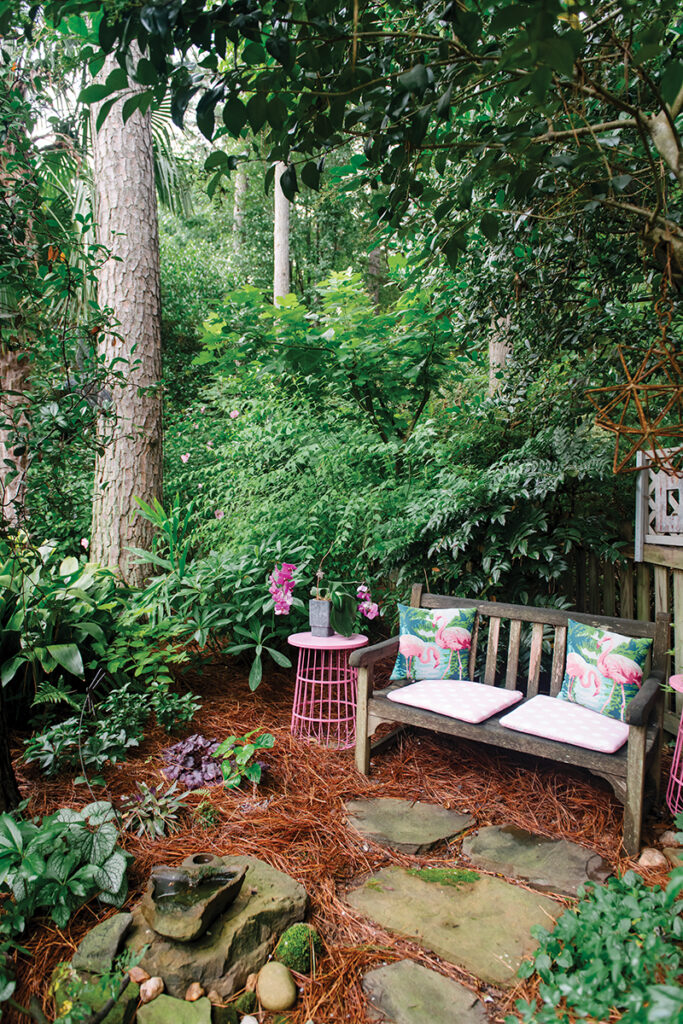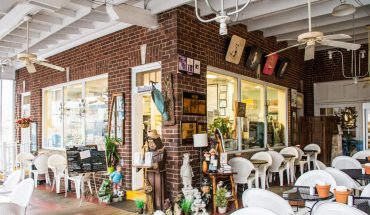This colorful and carefully curated garden links Morrisville couple Berry and Dick Hayter to their roots in Zimbabwe and beyond.
by Hannah Ross | photography by Liz Condo
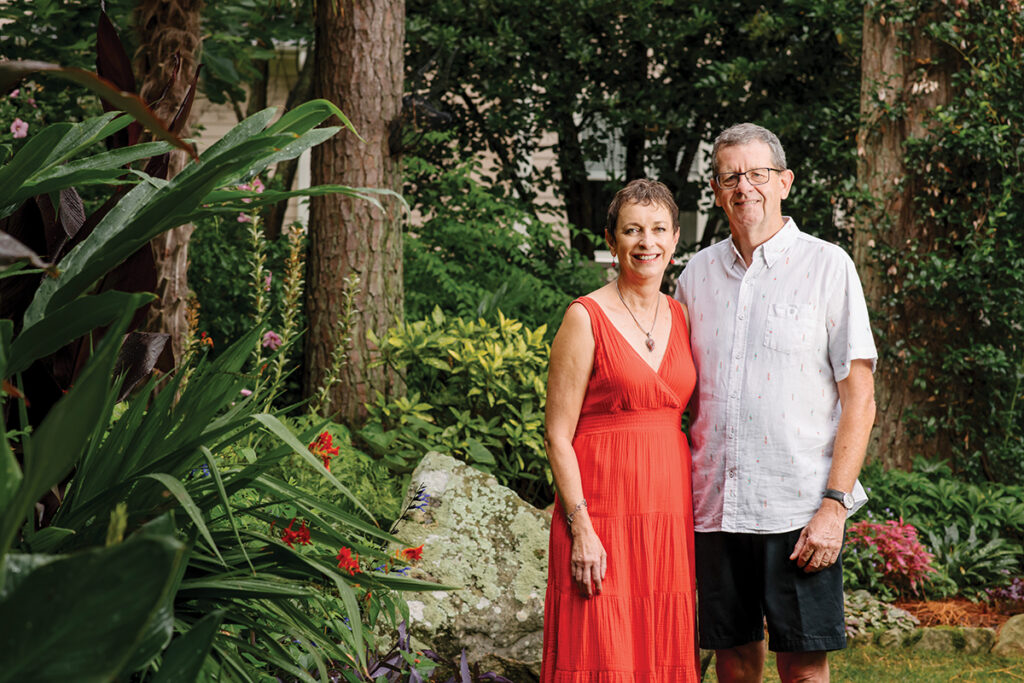
In the backyard of Berry and Dick Hayter’s home, crimson and gold gloriosa lilies dance like flames. This spring-planted bulb is a darling of the garden, partly because it’s the national flower of Zimbabwe, where both Berry and Dick were raised.
“That’s something I miss about Africa, how colorful it is,” Berry says. “I am often trying to recreate the colorful environment I grew up in.”
The Hayters have lived in England, Texas and Colorado, but settled in Morrisville with their two young children in 1998. Ties to their past are visible throughout their property: beloved tropical plants of their childhoods are interwoven with English-style features like mossy stone masonry and a bench tucked into a shady nook, surrounded by ferns.
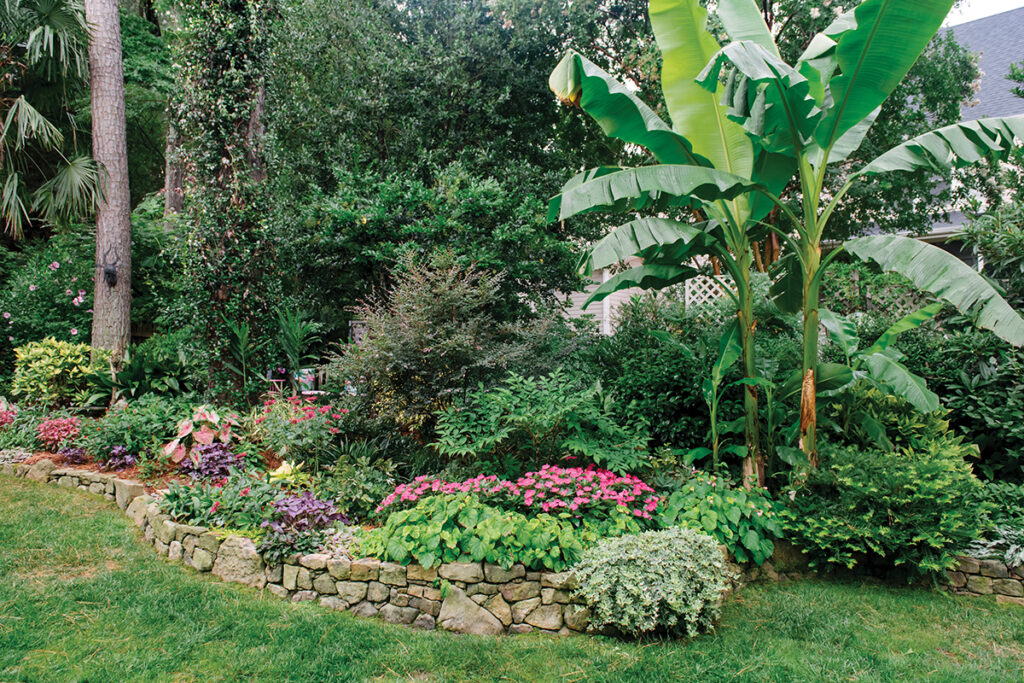
A star jasmine vine grows up a pine tree, azaleas bloom in the shade of southern Africa-inspired banana and palm trees, and a metal sculpture of a warthog perches by a lotus-filled pond. “I remember toting the warthog to the States from Zimbabwe in a carry-on suitcase, its metal legs protruding in all directions,” Berry laughs.
Her father worked in the Rhodesian Ministry of Agriculture as a research scientist, and her parents tended an impressive home garden, growing heaps of food and rows of dahlias, which often won prizes in local competitions.
“We didn’t have TV growing up and it was a very outdoor lifestyle. I spent a lot of time making forts, mud pies and little gardens,” Berry says. “My parents were always interested in how much rain we were getting and had a big compost heap. They’d weed together for fun on the weekends.”
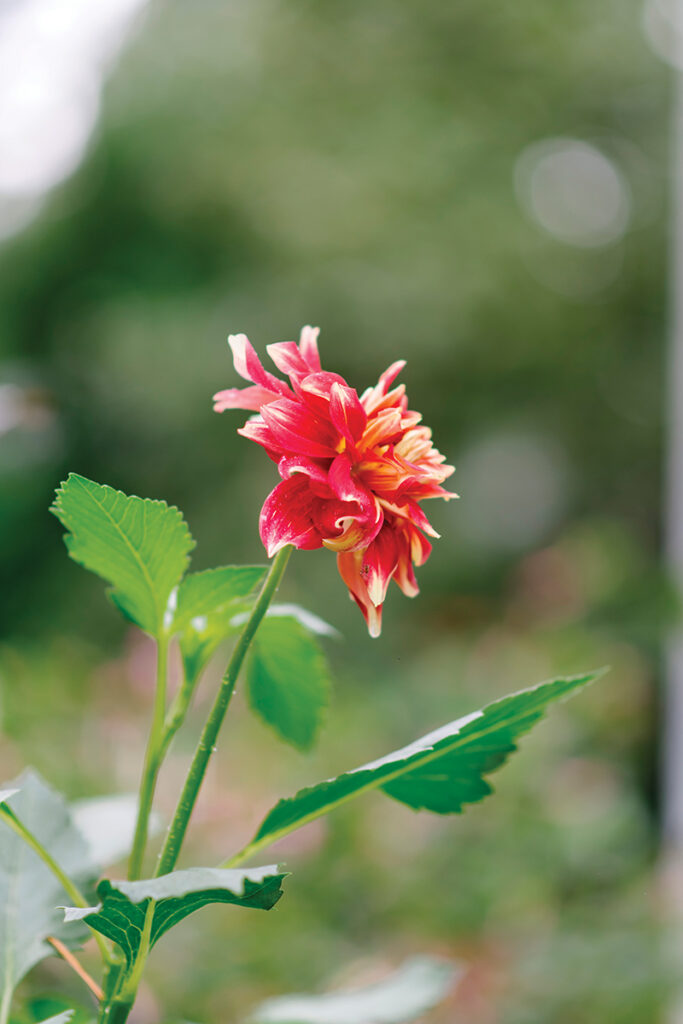
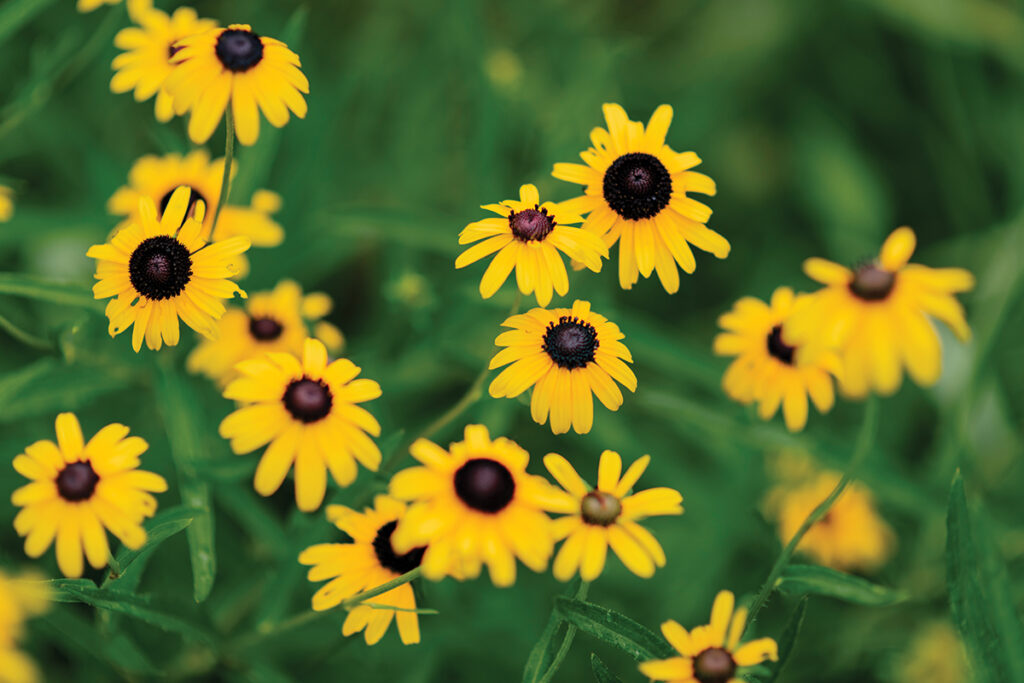
In the Hayters’ garden, towering dahlias in warm shades of red, orange, pink and purple are tucked among the gloriosa lilies. “The garden is a connection to my past,” Berry says.
In summer, the Hayters’ garden bursts with tropicals like elephant ear, coleus, caladium, impatiens and hibiscus. In the cool seasons, Berry loves tending English cottage garden favorites like snapdragons, nasturtiums and pansies. “These plants link me to my ancestors on my mother’s side, who were farmers in Kent,” she says.
Such harmonious blending of styles and specimens wouldn’t be easy for most gardeners to achieve. But Berry has a degree in landscape architecture technology and works as a residential garden designer. She used her expertise to add strategic hardscaping to the backyard.
The winding, mossy stone wall gives a natural flow to the space, anchored at one end by an asymmetrical boulder and at the other by the water feature and sculpture.
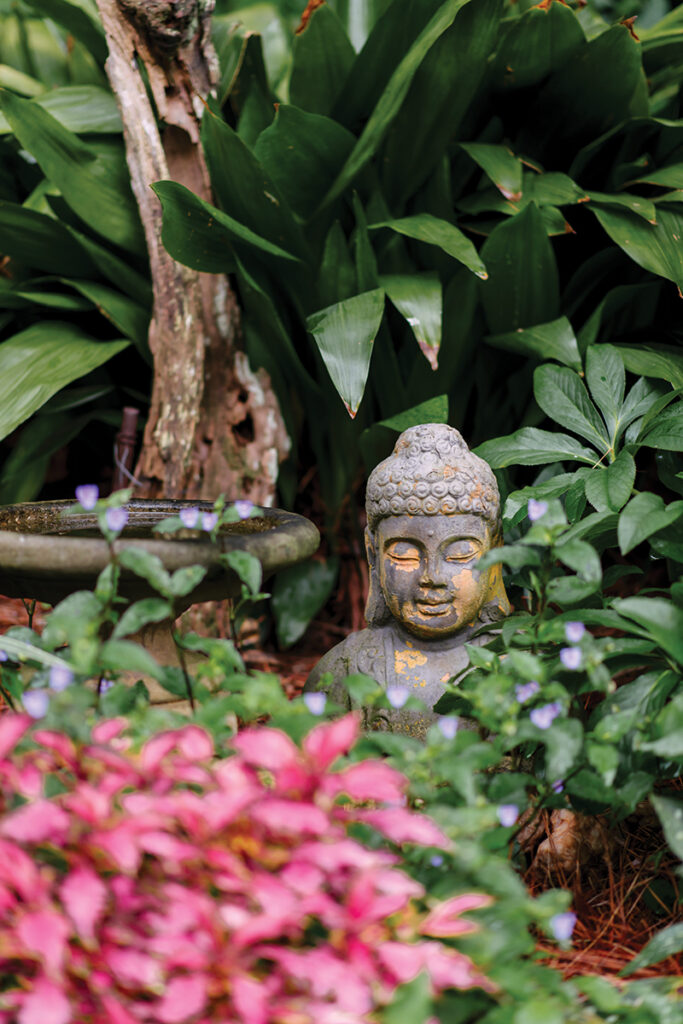
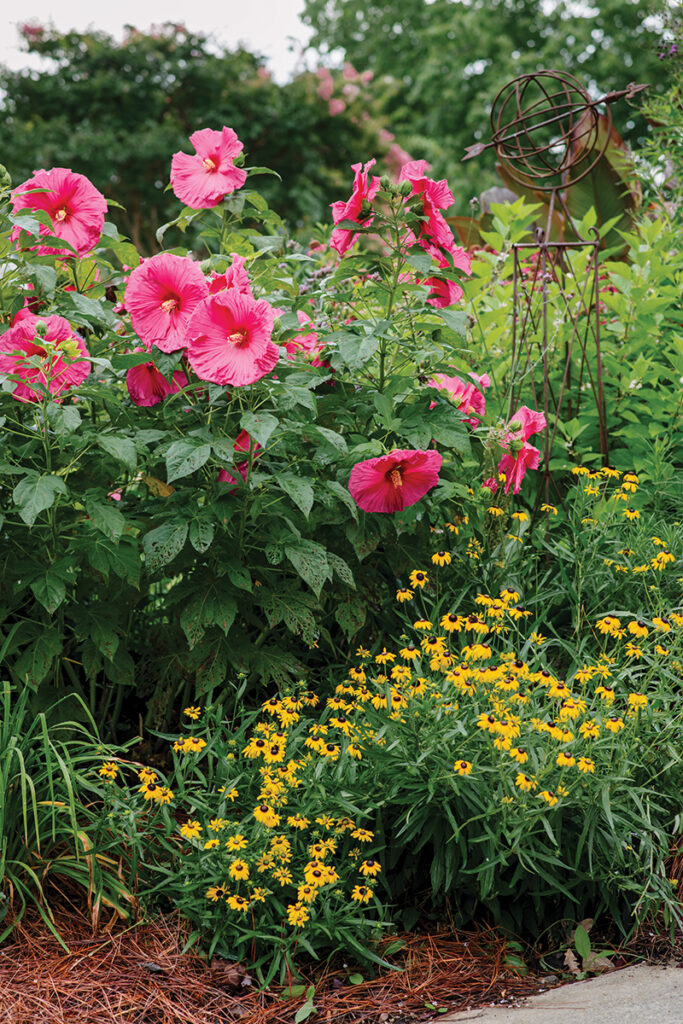
In the front yard, Berry has converted a strip of lawn into a buzzing pollinator garden. By layering newspaper and compost over the grass and planting a variety of flowering perennials, the space is now a haven for bees and butterflies.
The space is densely planted with species that bloom at different times and staggered heights, like hibiscus, rudbeckia, pineapple lily, bee balm and Joe Pye weed.
An unexpected focal point in her backyard plot of earth is a prized specimen plant, the voodoo lily, which Berry received at a Master Gardeners’ plant swap. Also called corpse flower, the voodoo lily is a rare bloomer, opening once every seven to 10 years for a brief 24- to 36-hour window — with a notorious aroma of rotting meat. Berry’s original plant first bloomed in March of 2021, and there is a new propagation taking root in the front yard “for all the neighbors to enjoy,” she laughs.
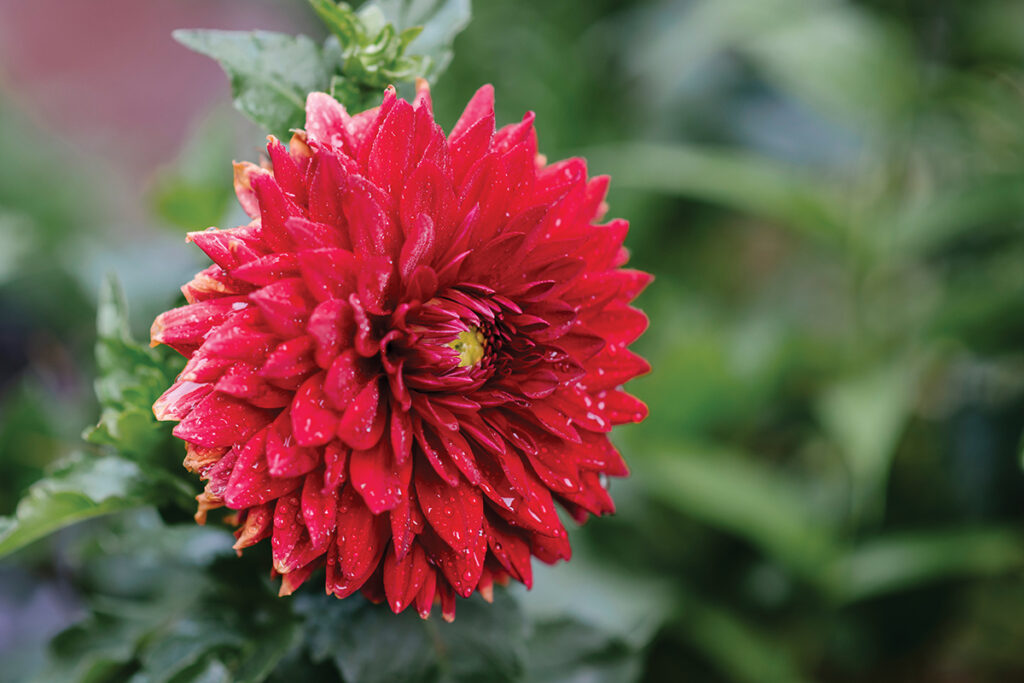
While Berry’s work in the garden is never done, it lends purpose and satisfaction to her days. Rather than gardening in long stretches, Berry has found that a little weeding and deadheading each day is the best way to tend a thriving space. “Even when I’m taking out the trash, I pull a few weeds,” she says.
Berry also takes time to observe her garden and record its changes. “I keep a notebook — I write down the date that I plant things, and will note the weather, the frost, when I cut things back. Over years, you get to understand how the seasons change, how the sunlight changes,” she says. When the Hayters first moved in, the soil was a depleted, rocky clay. Now, Berry adds compost to nourish the soil and she feeds plants with worm tea from her vermiculture bin. Her soil is rich, workable, and well-draining. “But it was not a quick process,” Berry says.
Berry Hayter encourages people to spend more time outside, to create small daily habits that connect indoor and outdoor living. “Take your coffee outside first thing in the morning when it’s not so hot, then water a few pots on your deck!” she says.
She clusters shade-loving plants in the darker corner of the yard, opting for species with rich colors and patterns, like variegated Solomon’s seal, pink impatiens, bear’s breeches and Japanese-painted fern. In sunny and warm pockets, Berry layers heat-loving species like crocosmia, coleus and four o’clocks at varied heights, maximizing color and texture in each bed.
“I sit on the patio while we’re drinking wine and think OK, there’s a little space there, and I want a bit of yellow to go with that purple,” Berry says. “There’s a lot of time spent looking at different angles, thinking about what I want.”
In September of 2019, the Hayters hosted their daughter’s wedding in their backyard. “It was something I had secretly hoped for, but didn’t want to suggest or push,” she says. But when her daughter asked, Berry was thrilled to open up the garden for the 50-guest affair.
Berry arranged the flowers, delighted that her daughter wanted bold, bright colors to complement her garden’s signature style.
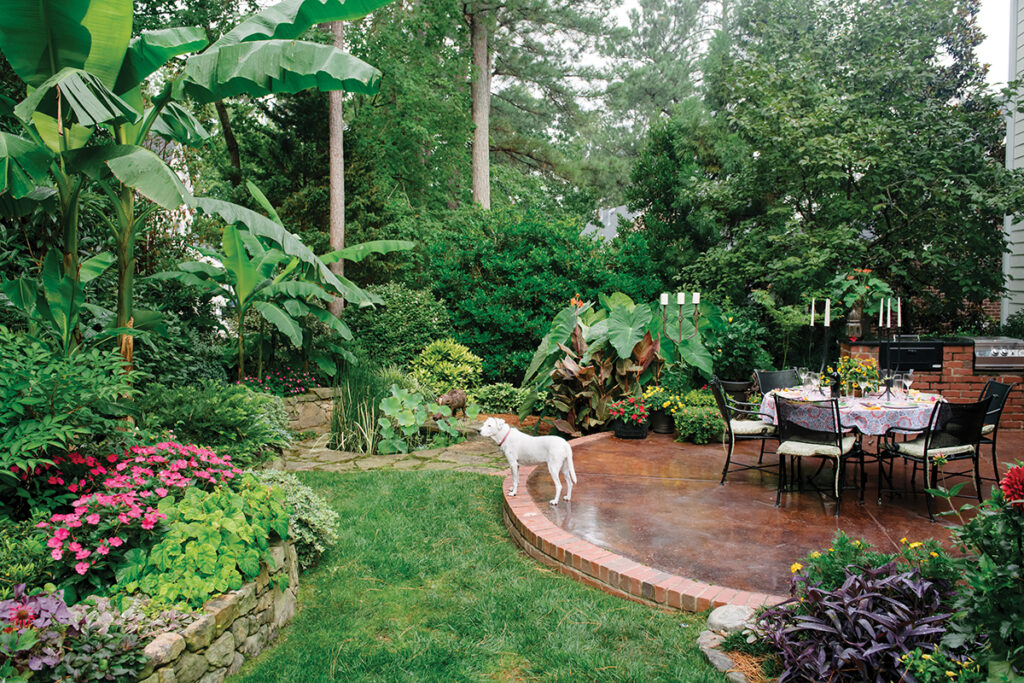
“It was a dream come true, but it was a challenge to keep everything looking good over the summer,” she says. “I asked her if she wanted it in the spring, with white annuals, and she said no — she wanted me to keep to the generally loud color scheme that I usually have.”
Her daughter now lives in New York, where she tends a small garden that her parents helped install.
This August, Berry and Dick will celebrate 40 years of marriage and 25 years of working in their garden. “This garden contains so many memories and has matured over the years along with us,” says Berry. “It’s all a work in progress, but it is a very satisfying feeling to watch it all grow and change.”
This article originally appeared in the June 2023 issue of WALTER magazine.

